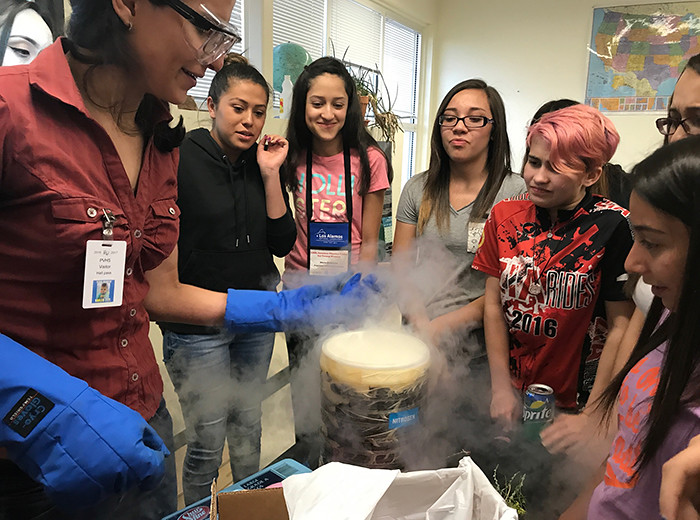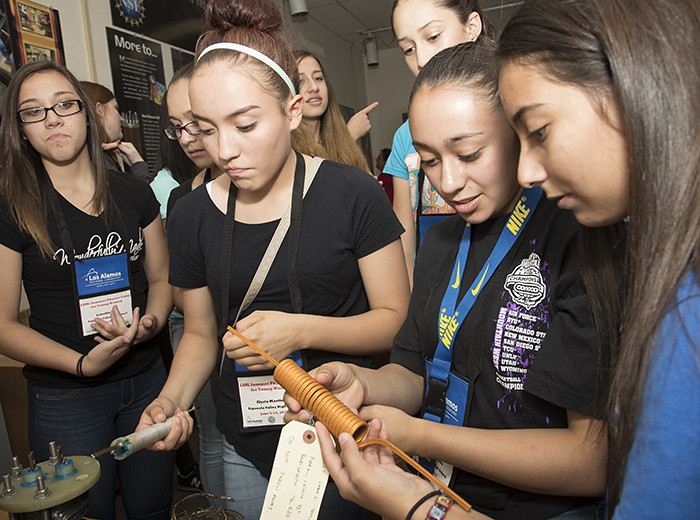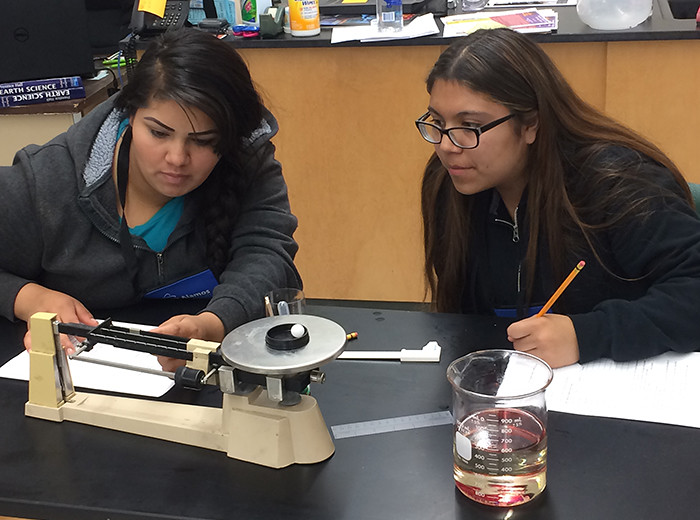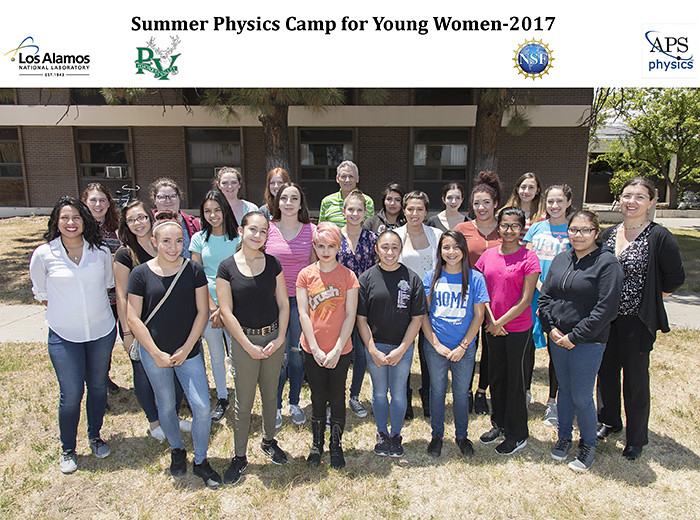
“Students really enjoyed the demos that used liquid nitrogen, and the cloud chamber that was built for them allowed them to see with their own eyes cosmic rays and how radioactivity works and can be observed,” Llobet Megias says.
School’s out for the summer, but 20 local high school women kept up their studies during a free, two-week physics summer camp at Pojoaque Valley High School that included a tour of LANSCE (the Laboratory’s neutron science center), the National High Magnetic Fields Laboratory, and New Mexico Consortium’s Biolab.
Held June 5–16, the inaugural Summer Physics Camp for Young Women allowed participants to learn from and get to know female professionals working in STEM programs as scientists, research technologists, and engineers. “The students felt the camp allowed them to understand what physics is all about and to understand what a physicist does day in and day out,” explains organizer Anna Llobet Megias. “By giving young women time to do hands-on lab activities, ask questions in a supportive environment, and understand the exciting ways that physics impacts their everyday life, the camp developed girls’ self-confidence in physics and empowered them to persist in learning—even when they have to struggle.”

Teacher demos of physics concepts made physics come alive in practical and exciting ways. Demos covered magnetism, cosmic rays, engineering design of a rocket, optics, superconductivity, and liquid nitrogen.
Each day’s activities revolved around a theme and included lectures, demonstrations, and activities about topics including matter, the electromagnetic spectrum, magnetism, and space. Important real-world skills, such as developing a presentation and writing a resume, were also addressed.
“At lunch time, a speaker from Los Alamos came to give a presentation on a science topic,” says Llobet Megias, noting that nearly 50 scientists, post docs, and students from 25 different organizations within the Laboratory volunteered to lecture, lead a demonstration, or simply attend as role models to interact with participants during the camp. Forty of the volunteers were female. “The goal of the volunteers was to support the demos and activities and also share their personal experiences with the students,” Llobet Megias says.

“Throughout their lifetime, girls receive countless subtle messages that science is for boys,” Anna Llobet Megias says. “The lack of female role models in physics, engineering, and technology reinforces the message that physics is for boys.” The Summer Physics Camp for Young Women aims to change that message.
The last three days of the camp involved building rockets from soda bottles. “Students explored the impact of weight, air pressure, fuel, and how to account for a smooth landing of the rocket,” Llobet Megias says. “They performed many tests outdoors and utilized a system of triangulation to measure the maximum altitude achieved. This allowed them to understand the impact of various parameters on the ultimate altitude of the rocket.” On the final day of camp, students presented their results, critiquing their rocket designs for effectiveness and efficiency.
The idea for the physics camp came from a similar program in the Dallas/Fort Worth area in Texas. “A small team from Los Alamos worked on how to implement a similar camp in New Mexico,” Llobet Megias says. “We talked to local teachers and superintendents, and modified the approach from the summer camp in Texas to make it successful for New Mexico’s students.”
The resulting program was hosted by Los Alamos National Laboratory and Pojoaque Valley High School, with grant funding from the American Physical Society and the National Science Foundation. The Laboratory’s Community Partnerships Office supported many of the volunteers for their time and effort. Students received stipends to supplement travel costs and offset any loss of income (for those taking time away from jobs to attend the program).

Participants included young women from ATC Charter School, St. Michael’s High School, Pojoaque Valley High School, Capital High, Española Valley High School, Early College Opportunities, Santa Fe High School, and New Mexico Connections Academy. Pojoaque Valley High School was selected to be ground zero for the camp because of its central location to Española, Santa Fe, and Los Alamos. Physics teacher Makena Reeves partnered with the Laboratory to define the curriculum and lead most of the instructional lectures in her science classroom.